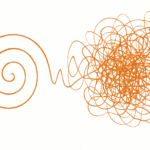Is your business about to disappear from under your feet?
Consider this product.
The life of the product begins when mammoth trees are grown on a huge scale, then pulled down and turned into pulp with massive machinery. The pulp is taken to giant mills and turned into huge rolls of paper. Those rolls are trucked and shipped around the world. The rolls are then run through huge presses to create hundreds of thousands of individual products for sale. Those products are transferred to trucks and delivery vans and taken to hundreds of distribution points, vendors and individual homes. Every single night of the year. Oh, and the product is ‘stale’ within hours of production, so anything unsold must be returned or destroyed.
That describes, of course, the newspaper you are reading. Or not, because many of you are not reading this article in a printed paper at all. Is that a surprise, given the business model I have just described? If you were starting a newspaper today, would you even contemplate this legacy approach to getting the news into readers’ hands?
The most valuable asset in any newspaper business are people: skilled reporters, writers, editors. Most of the costs, however, relate to the purchase and transportation of raw and finished paper. In fact, newspapers have never made money through their readers – printing and delivery costs typically exceed cover price. Newspapers only made sense as advertising-delivery vehicles. If they can’t do that, the business model collapses.
As I trust you have guessed, most of you reading this article in print today are unlikely to be doing so in five years’ time. The economics will not allow it. Technology has moved sharply forward, and the newspaper can now be streamed effortlessly to you in multiple forms: on your computer, your tablet, your e-reader and your mobile phone. No need to haul trees and paper around. So I do hope to still have you as a reader, but I know you’ll be connecting with me through a multiplicity of channels.
At this many of you traditionalists will be thinking: that’s not me. I like the feel and habit of paper. I think you’re going to be surprised by the convenience and attractiveness of the new e-reading gadgets that are on their way. Smartphones now number more than PCs in the world; and crucially they are breaching the $100 (Sh. 8,000) price-point. Widespread device usage is a matter of ‘when’, not ‘if’. Or when was the last time any of you saw a teenager reading a newspaper?
Imagine this: not one, but dozens of newspapers downloaded automatically every day onto your portable device (some free, some paid for). Full colour displays on every page. Customised layouts – you prioritize the news you want to read. Embedded video content – you don’t just read what Ocampo said, you see and hear him say it. Believe me, pretty much all of you are going to get converted.
This is not to say newspapers are going to disappear. Far from it – the world is more educated than ever and more hungry for news, analysis and opinion than it’s ever been. It just doesn’t want to consume it using the old business model. The newspaper will certainly need to ‘morph’ into a different form to be relevant, however, and enlightened media organizations know this and are hard at work transiting to a new world of digital content and delivery to portable devices. Their business model is in transition.
What about your business? What seismic shocks await you when the ground shifts from under your feet and you find your customers stampeding to a new technology? I don’t have the column inches to discuss this further with you today, so let’s make a date to meet here next week and explore the matter a little deeper.
Sunny Bindra’s new book, ‘The Peculiar Kenyan’ is now on sale

Buy Sunny Bindra's new book
The X in CX
here »
Popular Posts
- The pause that saves usJune 8, 2025
- Where are you rushing to—your funeral?June 29, 2025
- How to spot a real thinkerJune 15, 2025
- Built the app, forgot the flowJune 22, 2025
- The first push is the hardestJune 1, 2025















